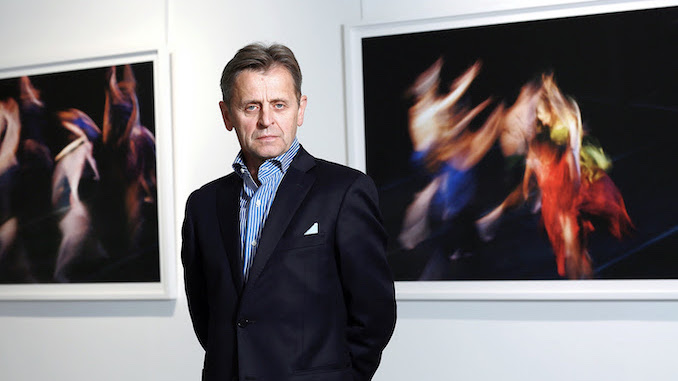Mikhail Baryshnikov Biography
Mikhail Baryshnikov is a Russian-American dancer, choreographer, and actor of Soviet Latvian origin. In the 1970s and 1980s, he was the preeminent male classical dancer. He is considered to be one of the greatest ballet dancers of all time. Along with mastering ballet, he is known as an artist who promotes contemporary dance and re-choreographs traditional ballet dance forms.
How old is Mikhail Baryshnikov?- Age
He is 74 years old as of January 2022. Baryshnikov was born Mikhail Nikolayevich Baryshnikov on 28 January 1948, in Riga, Latvia, Russia.
Mikhail Baryshnikov Height
Mik stands at a height of 5’7″ (170 cm), tall.
Mikhail Baryshnikov Family- Parents
Baryshnikov was born in Riga, Latvia, to Russian parents Nikolay Baryshnikov, an engineer, and Alexandra Baryshnikov, a dressmaker. Baryshnikov was born in Russia and became a naturalized American citizen in 1986.
Mikhail Baryshnikov Wife- Children- Girlfriend
He was in a relationship with Jessica Lange, an American actress. In 1981, the couple had a daughter, Aleksandra Baryshnikova. He has previously been linked to former ballerinas Natalia Makarova and Gelsey Kirkland. He was in a long-term relationship with Lisa Rinehart, a former ballerina, writer, and video journalist. They tied the knot in 2006. Peter (born in 1989), Anna (born in 1992), and Sofia are the couple’s three children (born in 1994).
Mikhail Baryshnikov Career
Mikhail Baryshnikov joined the Kirov Ballet as a soloist in 1967. His performance and technique were well received, so he did not need to go through the routine apprenticeship. ‘Giselle’ was his first stage performance.
Several choreographers choreographed ballet performances for him, recognizing his versatility and technical perfection. He has collaborated in this way with artists such as Igor Tchernichov, Oleg Vinogradov, Leonid Jakobson, and Konstantin Sergeyev. Later, as the Kirov Ballet’s premier noble danseur, he played the leading roles in ‘Gorianka’ (1968) and ‘Vestris’ (1969). (1969). The roles he played in these performances were choreographed specifically for him and became some of his signature pieces.

He was well-known among Soviet audiences, but he was becoming dissatisfied with several restrictions imposed on him, such as the prohibition on performing contemporary foreign ballet. In 1974, while on tour with the Kirov Ballet in Canada, he requested refuge in Toronto, stating that he would not return to the Soviet Union. He later joined the Royal Winnipeg Ballet. He had the opportunity to work with several creative choreographers and explore the synchronization of traditional and contemporary techniques within two years of moving to Canada. During this time, he freelanced for choreographers such as Alvin Ailey, Glen Tetley, Twyla Tharp, and Jerome Robbins.
Between 1974 and 1978, he was a principal dancer with the American Ballet Theatre, partnering with ballerina Gelsey Kirkland. During this time, he improvised and choreographed Russian classics such as “The Nutcracker” (1976) and “Don Quixote” (1978). He made his television debut with Wolf Trap on ‘In Performance Live’ in 1976. The following year, the television network CBS acquired his popular ballet theatre performance of ‘The Nutcracker for broadcast. Between 1978 and 1979, he was a member of the New York City Ballet under the direction of choreographer George Balanchine. Several ballet roles were created for him here, including those in Jerome Robbins’ ‘Opus 19: The Dreamer (1979),’ ‘Other Dances,’ and Frederick Ashton’s ‘Rhapsody’ (1980). He also performed on a regular basis with the Royal Ballet.
He rejoined American Ballet Theatre in 1980 and served as Artistic Director until 1989. From 1990 to 2002, he was the Artistic Director of the White Oak Dance Project, a touring dance company co-founded by himself and dancer and choreographer Mark Morris. Between the 1970s and the 1980s he made several appearances on television with ballet performances on shows like ‘Life from Lincoln Centre’ and ‘Great Performances’. His first film role was in ‘Turning Point,’ released in 1977. The performance was well received, and he was nominated for an Oscar for it. He also appeared in the film White Nights (1985), ‘And that’s Dancing!’ (1985), ‘Dancers’ (1987), and ‘Company Business’ (1991).
He also appeared in the final season of the television series ‘Sex and the City’ (2003-2004). In 2005, he established the Baryshnikov Arts Center, an art complex. It offers production facilities and space for performing arts such as music, theater, dance, and film design. He appeared in an episode of the Sundance Channel’s series ‘Iconoclasts’ in 2006. The following year, an episode of Mikhail Baryshnikov and his arts center aired on PBS News Hour with Jim Lehrer.
Mikhail Baryshnikov’s Net Worth
He has an estimated net worth of 45 million dollars.
Mikhail Baryshnikov Films
- Сказ о холопе Никишке. ЛенТВ, 1969
- Yuri Kopeikine, The Turning Point, 1977
- When I Think of Russia, 1980
- Narrator, That’s Dancing!, 1985
- Nikolai ‘Kolya’ Rodchenko, White Nights, 1985
- Anton Sergeyev, Dancers (also known as Giselle), 1987
- Pyotr Grushenko, Company Business, 1991
- Cesar, The Cabinet of Dr. Ramirez, 1991
- Russian Holiday (also known as Russian Roulette, video, 1994), 1992
- Le Mystere Bailee, 2001
- Interior Minister Sorokin, Jack Ryan: Shadow Recruit, 2014